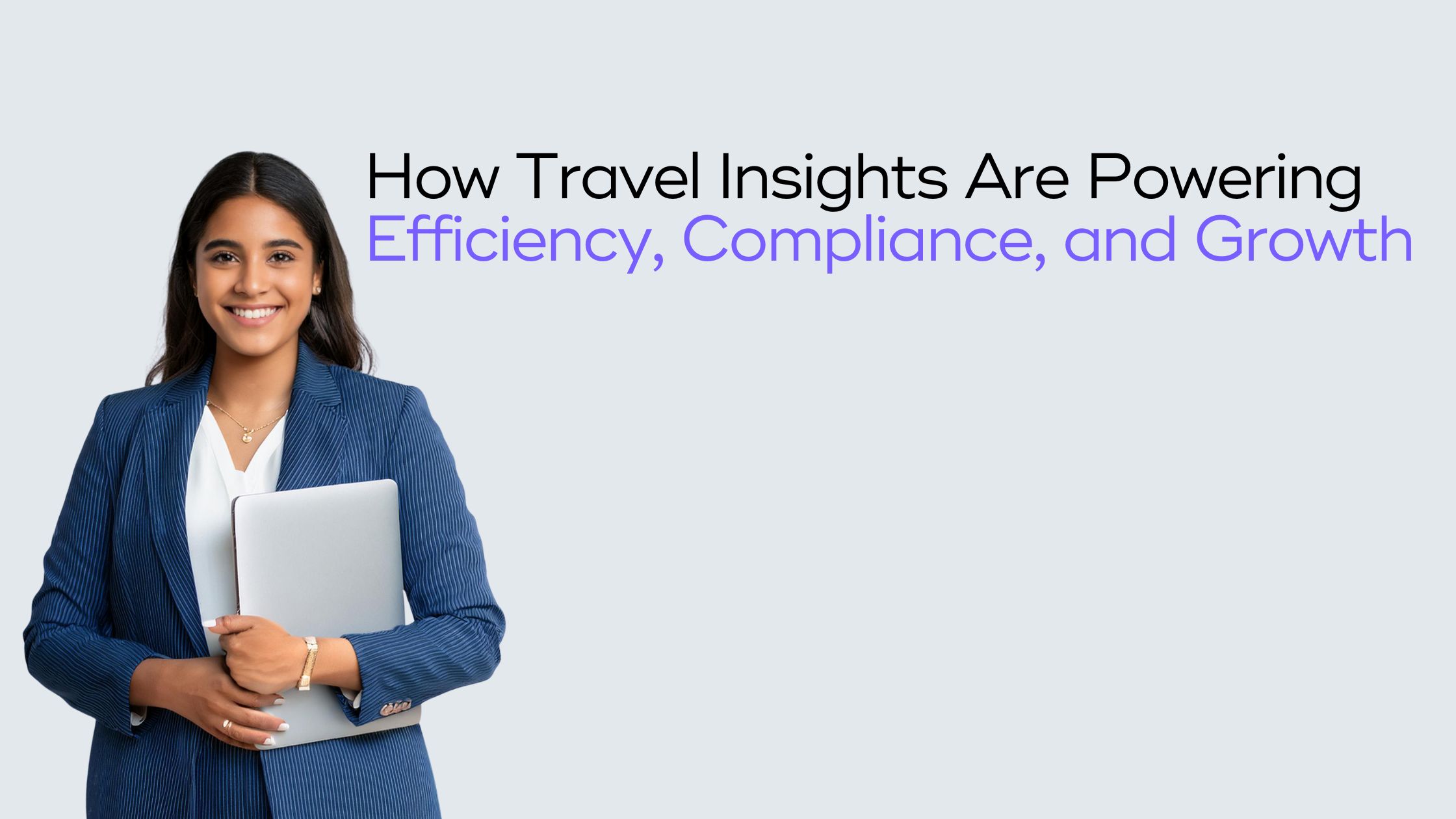As a CXO, your focus is on driving business growth, making strategic decisions, and building a future-ready organization. Travel might seem like a small operational detail—but it plays a big role in how your company performs, engages talent, meets compliance, and achieves ESG goals.
Are you still making travel decisions based on assumptions—or leading with real-time insights?
This is why Travel Analytics and MIS (Management Information Systems) have become more than just reports—they’re enablers of smarter, faster, and more aligned leadership.
This blog isn’t just about trends—it’s about giving you real, actionable knowledge you can use to improve control, reduce costs, and scale smarter.
What Is Travel Analytics & MIS?
Let’s break it down clearly:
Travel Analytics is the use of historical and real-time travel data to identify patterns, track costs, assess risks, and optimize decisions.
MIS (Management Information System) is a structured way of presenting that data in a meaningful, dashboard-based format for decision-making.
In simple terms: instead of looking at dozens of scattered reports, you get one smart window that shows you:
- How much you’re spending
- Where you’re spending it
- Who’s complying with your travel policy
- And where things are going off track
Without this, you’re relying on assumptions. With it, you’re leading with insights.
Why Analytics Has Become a Strategic Priority in Business Travel
1. Travel Is One of the Largest Controllable Costs
You probably already know this, but many companies still don’t track it deeply enough.
A few uncontrolled last-minute bookings or non-policy hotel stays, repeated month over month, can lead to massive leakage.
With analytics, you get:
- Department-wise cost breakdown
- Project-specific travel tracking
- Alert systems for policy violations
So instead of reacting to overruns, you prevent them.
2. You Can’t Improve What You Can’t See
Travel data lives across booking tools, emails, expense sheets, and finance systems. Without consolidation, you don’t really know:
- Which departments are overspending
- Which vendors are underperforming
- How much of your travel is booked late
This is where Travel MIS becomes critical. It pulls data into a unified dashboard so you finally have a mirror of your travel program.
3. Compliance Gaps Are Larger Than You Think
Here’s a stat that should concern you:
While over 95% of travelers are aware of their company’s travel policy, more than two-thirds admit to deviating from it(1).
Why? Often due to client preferences, personal convenience, or booking through non-preferred suppliers.
This gap results in:
- Missed GST credits
- Poor negotiation leverage
- Fragmented data
With MIS, you can flag out-of-policy bookings, see patterns in non-compliance, and take action—whether it’s adjusting policy or improving communication.
4. It Helps You Meet Sustainability Goals
Travel isn’t just a line item in your budget—it’s also a contributor to your company’s environmental footprint. As more organizations commit to sustainability and ESG (Environmental, Social, and Governance) standards, travel programs are coming under closer scrutiny.
Sustainability in business travel means lowering the environmental impact—mainly by cutting carbon emissions—without affecting business goals.
ESG is a broader framework that tracks how responsibly a company operates. Today, investors, boards, and customers expect you to take these goals seriously.
It’s not just a cost—it’s a carbon contributor. In fact:
Tourism contributes around 8% of global carbon emissions, with air travel being a major factor(2).
Yet only 7% of companies have set internal carbon fees, and 14% have set carbon budgets for their business travel(3).
Analytics bridges that gap. With travel MIS, you can:
- Measure CO₂ emissions by trip, team, or route
- Switch to greener options like rail or hybrid meetings
- Track improvement over time for ESG reporting
This makes you ready not just for stakeholder scrutiny—but for the future of responsible leadership.
5. It Strengthens Your Duty of Care
Employee safety is non-negotiable. Analytics helps you:
- Track real-time locations of travelers
- Identify risk-prone destinations
- Prepare better for disruptions
It’s not just about travel—it’s about trust, compliance, and responsibility.
What Should You Track? A CXO’s Travel Analytics Checklist
Here’s a ready-to-use list of the most valuable metrics you should review monthly or quarterly:
| Category | Key Metrics to Track |
| Spend Control | Cost per trip, department, employee, or project |
| Booking Behavior | % of last-minute vs. advance bookings |
| Compliance | % of bookings done within policy, exception trends |
| Top Routes & Hotels | Most traveled destinations and frequently used hotels |
| Vendor Usage | Vendor performance by cost, service quality, and volume |
| Traveler Experience | Post-trip feedback, delays, escalations |
These metrics don’t just help you control spend—they give you the power to transform your travel program into a strategic asset.
Common Business Challenges Solved by Travel Analytics
- Problem: Travel costs are rising, but there’s no clarity on the reasons.
Solution: Analytics shows which departments are overspending, how late bookings add to costs, and which trips could be avoided or replaced with virtual meetings. - Problem: Employees are booking directly with hotels or agents, bypassing policy.
Solution: MIS flags off-platform bookings and shows how much GST credit or cost savings you’re missing out on. - Problem: Finance teams are spending days reconciling travel expenses.
Solution: Integrated MIS generates automated, auditable reports aligned with expense systems.
Analytics helps you replace assumptions with evidence. That’s where better decisions begin.
How to Build a Strong Analytics-Driven Travel Program
If you’re still depending on Excel files or end-of-quarter summaries, you’re missing the real value of travel data.
Here’s how to evolve your program:
- Centralize Bookings
Use a single platform for all travel to ensure consistent data capture across your company. - Integrate with Finance & HR
Connect your travel tools with expense, payroll, and ERP systems to automate data reconciliation. - Automate MIS Reports
Don’t wait for manual reports. Use dashboards that update daily with accurate spend and compliance data. - Create Role-Based Access
Different teams need different insights. Build dashboards specific to finance, HR, and operations. - Review Analytics Monthly
Include travel data in your regular business reviews. Use the insights to adjust budgets, improve processes, and stay on track.
Choose a travel partner that goes beyond bookings—one that helps you measure, analyze, and optimize every aspect of travel.
How CoTrav Helps You Make Data-Driven Travel Decisions
At CoTrav, we help you go beyond just booking travel—we empower you with real-time visibility, cost control, and strategic insights.
By centralizing all your travel bookings, we give you consistent, accurate data across departments and regions. Our automated MIS dashboards are built for CXO-level decision-making, offering clear insights on spend, policy compliance, vendor performance, and carbon emissions.
You can track where costs are rising, and how each trip impacts your sustainability goals. We also support duty of care with real-time traveler tracking and alerts.
Simply put, CoTrav turns your travel program into a powerful tool for growth, governance, and smarter business decisions.
Conclusion:
In today’s fast-moving business landscape, you can’t afford to make decisions in the dark—especially when it comes to travel. With the right analytics and MIS tools, you gain real-time clarity, improve policy compliance, cut hidden costs, and align your travel with broader business goals like ESG and employee safety.
At CoTrav, we don’t just manage travel—we simplify it with smart, data-driven solutions built for CXOs like you. We help you see the bigger picture, act faster, and lead with impact.
Let CoTrav be your partner in building a smarter, more strategic travel program—start today.




